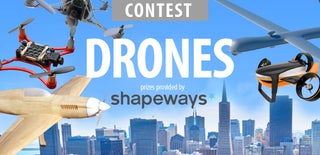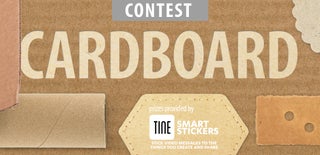Introduction: RC Bluetcar
A car made with Arduino controlled by ios or android ..
In this case controlled by IOS.
Step 1: Necessary Materials
1- Arduíno
1- Chip L293D
2- Leds ( any color )
1-Buzzer
1-HM-10 ( bluetooth module )
Jumpers.
Step 2: Performing the Links
Step 3: After Connecting Pins, Find a Frame (chassis)
What can be done:
- Cardboard
-Acrylic
- Used Rc Cars ..
And what I prefer.
Step 4: Choose the App to Control the Project
Choose the app is important because, as the app is coming from the code, and what commands it sends to the project receive and play the code ..
I recommend App's I used in the project as the LOFI ROBOT (IOS). Providing the code, and the app get a good connection with the Bluetooth (HM-10). However can use the app you prefer, it is only a recommendation LOFI , I realized the project with him and it was quiet ..
Step 5: CODE !
If you use the lofi app, the code has been modified to be used in this Project or use original code this available in
All credits to the robot lofi app, I am using to represent only show the operation of the project that used the LOFI ROBOT app.
int val = 0;
int horizontal = 50;
int vertical = 50;
int A_state = 0;
int B_state = 0;
char data[5];
int m1; int m2;
void setup()
{
// silnik M1
pinMode(2, OUTPUT);
pinMode(4, OUTPUT);
pinMode(3, OUTPUT);
// silnik M2
pinMode(8, OUTPUT);
pinMode(7, OUTPUT);
pinMode(5, OUTPUT);
//buzzer
pinMode(13, OUTPUT);
// diody LED
pinMode(10, OUTPUT);
pinMode(9, OUTPUT);
Serial.begin(9600); // komunikacja Arduino->Komputer przez kabel USB
Serial.begin(9600); // komunikacja Arduino->HM-10 bluetooth
motor1(1,225 );
motor2(1, 225);
}
void loop()
{ if (Serial.available())
{
Serial.readBytes(data, 5); // odbior danych z aplikacji
horizontal = int(data[1]);
// joystick os pozioma
vertical = int(data[2]); // joystick os pionowa
A_state = int(data[3]);
// lewy przycisk
B_state = int(data[4]); // prawy przycisk
horizontal = horizontal * 2 - 100;
vertical = vertical * 2 - 100;
Serial.print("horizontal = ");
Serial.print(horizontal);
Serial.print(" vertical = ");
Serial.print(vertical);
Serial.print(" A = ");
Serial.print(A_state);
Serial.print(" B = ");
Serial.println(B_state); } digitalWrite(13, A_state);
digitalWrite(10, B_state); digitalWrite(9, B_state);
m1 = vertical - horizontal;
m2 = vertical + horizontal;
int mm1 = min(255, 2.7 * abs(horizontal ));
int mm2 = min(255, 2.7 * abs(vertical));
if (m1 > 0)
motor1(true, mm1);
else
motor1(false, mm1); if (m2 > 0)
motor2(true, mm2);
else
motor2(false, mm2);}
void motor1(boolean direction, int power)
{
digitalWrite(2, direction);
digitalWrite(4, !direction);
analogWrite(3,power );
}
// funkcja sterująca silnikiem podłączonym do gniazda M2
void motor2(boolean direction, int power)
{
digitalWrite(7, direction);
digitalWrite(8, !direction);
analogWrite(5,power );
}
Participated in the
Drones Contest 2016

Participated in the
Cardboard Contest 2016

Participated in the
Lamps and Lighting Contest 2016

Participated in the
LED Contest











